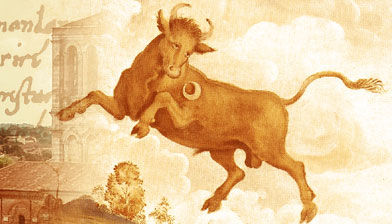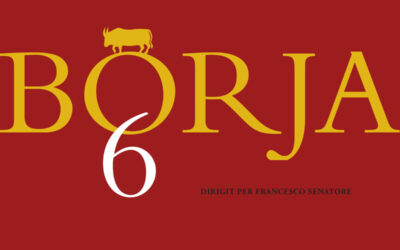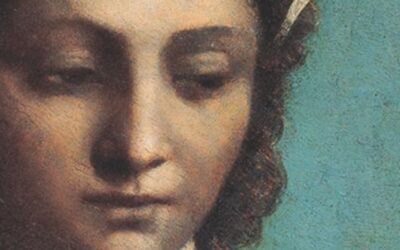Alexander VI, the powerful Head of the Catholic Church at the dawn of the sixteenth century, was an illustrious figure of the Italian Renaissance. Not unlike other popes of his time (Pius II, Sixtus IV, Julius II, Leo X) the Supreme Pontiff loved art and beauty. Great Renaissance artists, from Pinturicchio to Titian, glorified his papacy, his exceptional virtues and great abilities by some beautiful masterpieces.
The painting Jacopo Pesaro being presented by Pope Alexander VI to Saint Peter, housed at the Royal Museum of Fine Arts from Antwerp, is an outstanding work of art from the early years of the Cinquecento. This oil on canvas of 145 cm x 183 cm, that depicts an imaginary meeting between the Pope, a Venetian bishop and St. Peter, was painted by Titian (1490-1576) in the first decade of the sixteenth century and completed few years after the death of Alexander, that occurred in 1503. The artist, one of the greatest of his wonderful age, unanimously considered the leading member of the Venetian school, created the painting before turning twenty. It is certainly one of his earliest and fascinating works.
The painting praises the tremendous victory of the Christian fleet against the Ottoman Empire, at the 30th of August 1502, during the naval battle of Santa Maura. This wonderful event for Christendom took place at the peak of Alexander’s powerful reign. The naval force that opposed the Turks was composed of squadrons of the Venetian fleet and thirteen Roman warships. Benedetto Pesaro and his cousin, Jacopo, bishop of Paphos, commanded the Christian Armada. Jacopo Pesaro himself commissioned the painting, shortly after the battle, as a sign of gratitude for the marvelous achievement of Alexander VI’s papacy.
The most interesting character is, undoubtedly, Pope Alexander, standing in the center-right side of the painting. Dressed in pontifical clothes, wearing tiara, the Pontiff is portrayed with a vague smile on his face. With his left hand he introduces Jacopo Pesaro, who kneels before St. Peter, keeping the papal flag in his hands. The Borgia family coat of arms and the Keys of St. Peter are easily seen here. Pesaro is wearing black robes, an obvious contrast with the colored clothes worn by the other two characters.
The Pope and the Bishop of Paphos look piously toward St. Peter, portrayed sitting on the left side, on a carved stone, with various scenes in the lower side. Peter holds the Holy Book in his left hand and gives his blessing. In the distance we see the waters surrounding the island of Santa Maura and several warships that confronted in this celebrated battle at sea.
Titian’s Jacopo Pesaro being presented by Pope Alexander VI to Saint Peter is a glorification of the Borgia papacy and a true invocation of his power. The historical victory of Santa Maura was due to the military strategy of Pesaro cousins and to the wise administration of Alexander VI. Artist’ depiction, not an easy task given his young age and the significance of the characters, is a sublime work of art, celebrating a great age and a brilliant Renaissance man.





